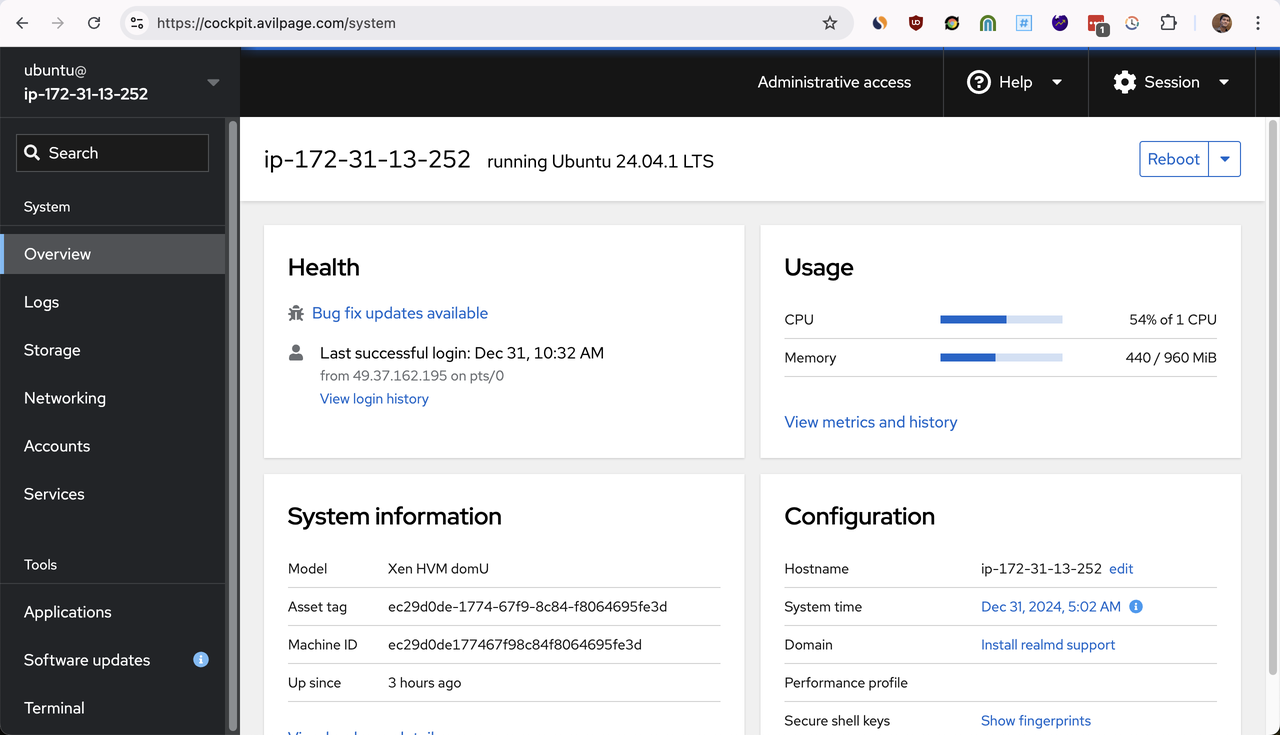Install Cockpit on Remote Linux VM
Introduction

Cockpit is an easy to use web-based interface(like a cPanel) for managing Linux servers. When we want to provide access to non-developers or people who are new to linux, it is a good idea to get them started with Cockpit. It provides a user-friendly interface to manage services, containers, storage, logs, and more.
Setup
Let's create a new Ubuntu VM and install Cockpit on it.
sudo apt update . /etc/os-release sudo apt install -t ${VERSION_CODENAME}-backports cockpit
Once the installation is complete, we can get the public ip of the VM and access the Cockpit web interface running on port 9090.
It will be difficult to remember the public ip of the VM. So, let's create a DNS record for the VM. Let's add an A record in DNS settings to point cockpit.avilpage.com to the public ip of the VM.
Reverse Proxy
Let's set up a reverse proxy to access the Cockpit web interface using a subdomain.
sudo apt install caddy
Add the below configuration to /etc/caddy/Caddyfile.
cockpit.avilpage.com { reverse_proxy localhost:9090 }
We need Origins to Cockpit configuration at /etc/cockpit/cockpit.conf to allow requests from the subdomain.
[WebService] Origins = https://cockpit.avilpage.com
Restart both services and open https://cockpit.avilpage.com in browser.
sudo systemctl restart cockpit sudo systemctl restart caddy
Conclusion
Cockpit web UI is a great tool to manage Linux servers even for non-developers. Users can browse/manage logs, services, etc. It also provides a terminal to run commands on the server
Need further help with this? Feel free to send a message.
